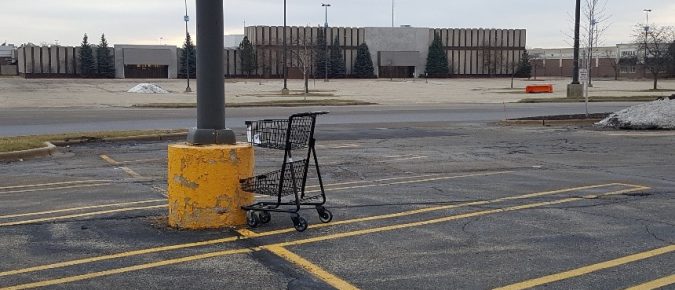Summary February 2022 — As part of “Black History Month 2022: Why does Black History Matter to Extension’s work?” by the African American Black Employee Resource Group (AABERG), members of the the Entrepreneurs of Color Business Support Team, co-hosted a series incorporating Black History into Extension programming, sharing stories, research and vibrant discussion. The Entrepreneurs of […]
Summary August 2021 — In the final session on entrepreneurship, Tessa Conroy, Assistant Professor of Agricultural and Applied Economics at UW–Madison and Community Economic Development Specialist, discusses “how to build an entrepreneurial ecosystem”. Webinar Recording Additional Materials Entrepreneurship 101, Part 3, PowerPoint Explore Our Lunch-n-Learn Series
Summary August 2021 — In part two of a three-part series on entrepreneurship, Tessa Conroy, Assistant Professor of Agricultural and Applied Economics at UW–Madison and Community Economic Development Specialist, discusses the “what” of entrepreneurship in economic development. Webinar Recording Additional Materials Entrepreneurship 101, Part 2, PowerPoint Explore Our Lunch-n-Learn Series
Summary August 2021 — In part one of a three-part series on entrepreneurship, Tessa Conroy, Assistant Professor of Agricultural and Applied Economics at UW–Madison and Community Economic Development Specialist, discusses the “why” of entrepreneurship in economic development. Webinar Recording Additional Materials Entrepreneurship 101, Part 1, PowerPoint Explore Our Lunch-n-Learn Series
Nonemployer establishments, sole proprietorships and partnerships without any paid employees, are an important part of the country’s economy. As of 2018, they made up a large and quickly growing share of businesses in the United States at 77% of the total while the other 23% of establishments were employer businesses [1]. Given that nonemployer establishments are businesses without employees, they are predominantly independent contractors who work for themselves or small businesses operated only by the owner(s) or unpaid members of their family.
January 2021 — Small towns and rural communities across Wisconsin have markedly different experiences when it comes to their downtowns and main streets. Over the last decade, some Wisconsin communities have seen their downtown district become a lifeline to a rural renewal, while others have experienced decline defined by an exodus of businesses and disinvestment […]
Restaurants have become a key element in the business mix of downtowns throughout Wisconsin and the U.S. Their growth has helped reestablish downtown as the central social district of our communities and they have been a major employer and a visible example of entrepreneurship at work.
The COVID-19 pandemic has significantly impacted Wisconsin’s economy. When the country reported the first case on January 20th, 2020, there was uncertainty as to how fast and far the virus would spread. On March 11th, the World Health Organization declared a pandemic and on March 16th all Wisconsin public schools were ordered to close while Governor Tony Evers instituted a Safer-at-Home order and closure of all non-essential businesses.
Recent analysis demonstrates that communities of color are disproportionately suffering the health impacts of COVID-19. In Milwaukee County, 29 percent of the population is Black or African American yet Black or African Americans represent 43 percent of COVID-19-related deaths1. Much like the poor health outcomes from COVID-19 are disproportionately suffered by people of color, the economic costs are likely also inequitably distributed across racial and ethnic groups.
Summary Steven Deller discusses Community Development, Economic Development, and Community Economic Development and the differences between them. Webinar Recording Additional Materials What-is-Community-Economic-Development Explore Our Lunch-n-Learn Series
The US is significantly oversupplied with retail space. We have as much as 10-times the square feet per person as Germany. This has contributed to as many as 10,000 store closures this year. Smaller community malls have been hurt the most. Those that remain open typically operate at a vacancy rate of 10% or more. […]
August 2019 — In recent decades, significant resources have been devoted to entrepreneurship, and studies find net annual job creation is positive only for startups (Economic Innovation Group, 2017; Conroy and Deller, 2015). As a result, growth potential of existing firms is sometimes overlooked. Expansions, existing firms adding jobs, create 75% of gross new employment […]
















